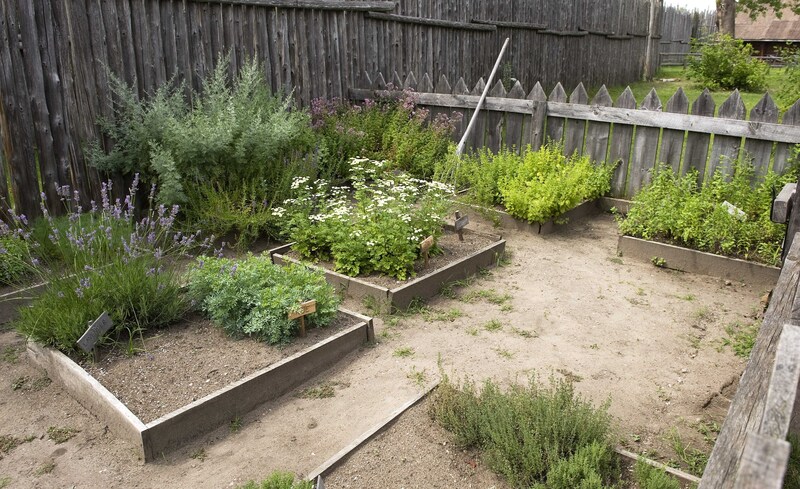Child-Friendly Gardening: Safe, Fun, and Educational
Posted on 31/05/2025
Child-Friendly Gardening: Safe, Fun, and Educational
Gardening is a rewarding experience for individuals of all ages, but it holds especially unique benefits for children. From fostering a connection with nature to developing critical life skills, child-friendly gardening can transform any outdoor space--or even a windowsill--into a living classroom. This comprehensive guide explores how you can create safe, fun, and educational gardening experiences for children of various ages and abilities.
Why Gardening is Important for Children
There's mounting evidence that exposing children to gardening delivers wide-ranging benefits. From physical health and cognitive development to emotional growth and environmental stewardship, a child-safe garden is more than just a playground--it's a vibrant environment for lifelong learning.
- Physical development: Digging, planting, watering, and harvesting all help children improve their fine and gross motor skills.
- Emotional well-being: Being among plants and soil is calming, reducing stress and promoting mindfulness.
- Scientific curiosity: Gardening encourages observation, hypothesis-testing, and patience as children watch their plants grow.
- Life skills: Responsibility, nurturing, and problem-solving are all nurtured through tending plant life.
- Environmental awareness: Kids learn firsthand about ecosystems, sustainability, and the origins of food.
Building Responsibility and Patience
Gardening for children offers an ongoing lesson in responsibility. Plants need regular care, and the commitment of nurturing something from seed to bloom cultivates a sense of accomplishment. Whether a cherry tomato on the vine or a sunflower climbing skyward, the act of waiting and watching develops patience, persistence, and a respect for the rhythms of nature.

Essential Safety Tips for Gardening with Kids
Safety is paramount in gardens for children. Here are essential tips to ensure a protected and happy gardening environment for your little ones:
- Choose non-toxic plants: Avoid plants that are toxic if ingested or that have thorns, spines, or other hazardous features.
- Provide appropriate tools: Invest in child-sized gardening tools with blunt edges and comfortable grips.
- Supervise younger children: Always monitor younger kids during gardening activities, especially when using tools or water hoses.
- Use natural, organic products: Avoid synthetic pesticides and fertilizers; opt for natural alternatives whenever possible.
- Teach good hygiene: Encourage hand-washing after gardening sessions and before eating.
- Create shaded areas: Prevent sunburn with hats, sunscreen, or a shaded section in your kids' garden zone.
- Be cautious with water features: Ponds and fountains can be fascinating for kids, but water safety is key. Never leave children unattended near even shallow water.
Top Child-Safe Plants for Your Garden
Selecting the right plants is the cornerstone of a safe gardening experience for children. Here are some tried-and-true favorites that are both engaging and non-toxic:
- Sunflowers: Tall, dramatic, and easy to grow from seed. Kids love measuring their progress!
- Cherry tomatoes: Delicious to snack on right off the vine.
- Snapdragons: Their "dragon mouths" are fun for small fingers to squeeze.
- Marigolds: Robust, colorful, and naturally deter pests.
- Lettuce and salad greens: Fast-growing and gratifying to harvest for homemade meals.
- Strawberries: Sweet, rewarding, and perfect for little hands to pick.
- Mint and basil: Fragrant herbs that are simple to grow in pots or garden beds.
Designing a Child-Friendly Garden
When planning a child-friendly garden, the physical layout is as important as the plant choices. Below are step-by-step strategies to create an inviting space that inspires exploration and learning:
1. Prioritize Accessibility
- Create raised beds or container gardens at varying heights for children of different ages or abilities.
- Use wide paths for easy maneuvering, even for wheelbarrows or children with mobility aids.
- Keep frequently-used tools and watering cans within easy reach for little gardeners.
2. Divide the Space into Zones
- Establish clear areas for different activities--such as planting, digging, or playing.
- Designate a "discovery zone" for bug hunts, bird watching, or sensory exploration.
- Add a relaxation spot with a small bench, blanket, or hammock for quiet moments or reading garden storybooks.
3. Use Sensory Elements
- Grow plants with contrasting textures, such as lamb's ear (soft), succulents (waxy), or ornamental grasses (feathery).
- Choose fragrant flowers and herbs--lavender, rosemary, mint--for a delightful sensory experience.
- Plant edibles to encourage tasting and smelling, reinforcing the garden-to-table connection.
- Incorporate water--such as a birdbath or small fountain--for calming sounds.
4. Make it Colorful and Inviting
- Use vibrant flower beds and painted stepping stones to make the space visually stimulating.
- Allow kids to decorate plant labels or garden signs to give them a sense of ownership.
- Add wind chimes, pinwheels, or garden art made by the children themselves.
Fun and Educational Activities for Kids' Gardens
Child-friendly gardening isn't just about growing plants--it's about cultivating curiosity. Here are some educational and recreational activities to try in your family-friendly garden:
1. Growing from Seed
Nothing is more magical than witnessing a tiny seed turn into a full-grown plant. Start with fast-germinating seeds like radishes, cress, or beans for results kids can see in a week or two.
2. Making a Garden Journal
Provide kids with notebooks to record what they planted, draw pictures, and document growth through the seasons. This encourages observation and literacy skills.
3. Composting and Worm Farms
Teaching the basics of composting or setting up a small worm farm is a hands-on way to introduce eco-friendly gardening for kids. This helps children understand the role of decomposition and recycling nutrients within nature.
4. Wildlife Watching
Install a homemade bird feeder or butterfly habitat. Identify the birds, bees, and bugs that visit, sparking a lifelong appreciation for wildlife and biodiversity.
5. Building Plant Lab Experiments
Try simple experiments like growing beans in a jar to observe roots, creating a rain gauge, or using cardboard tubes for vertical planting. Kids' gardening science projects foster inquiry and critical thinking.
6. Art in the Garden
Encourage creativity by painting rocks, crafting wind chimes, or designing mosaics with twigs and leaves. Every art project is an opportunity to connect kids with their garden space.
Tips for Encouraging Lifelong Gardening Enthusiasm
It's important not just to introduce children to gardening, but to nurture their ongoing love for growing things. Here are practical tips for making gardening a family tradition:
- Let kids lead: Allow children to pick some plants and have their own patch to manage. Ownership increases motivation.
- Make it manageable: Start with small, achievable projects that yield quick results.
- Celebrate successes: Take photos at harvest time or share meals made with homegrown produce.
- Read garden-themed books together: Stories can reinforce concepts learned in the dirt and spark new curiosity.
- Connect with community gardens: Interacting with other gardening families and children encourages social learning and teamwork.
- Embrace mistakes: Gardening is filled with "teachable moments." Dead plants or imperfect vegetables are opportunities, not failures.
Recommended Tools and Supplies for Child-Friendly Gardening
Equipping your kids with the right gear makes the experience safer and more enjoyable. Quality children's gardening tools are scaled down for small hands but still functional.
- Child-sized trowels, rakes, and spades: Rounded tips and sturdy handles for safe, effective digging.
- Watering cans: Lightweight and easy to pour for small children.
- Gardening gloves: Protect delicate hands from thorns, splinters, and soil.
- Kneeling pads or mats: Keep kids comfortable as they spend time at soil level.
- Colorful plant markers: For labeling and personalizing different crops.
- Sturdy shoes and sun hats: Protect feet and faces while working outdoors.

Gardening for Different Age Groups
Gardening with Young Children (Ages 2-5)
For toddlers and preschoolers, sensory exploration is key. Focus on planting easy-care crops and giving lots of time for digging, filling, pouring, and feeling different plants.
- Splash in watering cans and mud kitchens
- Explore textures like lamb's ear, moss, or soft herbs
- Watch fast-growing seeds like beans or sunflowers
Gardening with School-Age Children (Ages 6-12)
Older kids can handle more responsibility and learn about plant life cycles, composting, and food chains. Encourage experimentation and deeper questioning.
- Manage a personal garden bed or container
- Grow edible plants and cook meals using their harvest
- Set up science experiments and garden challenges
Gardening with Teens
Teenagers benefit from bigger projects--landscape design, advanced composting, or leading garden clubs. Gardening becomes a creative outlet, leadership activity, and dream-building tool for older children.
- Plan and plant pollinator strips or vegetable beds
- Document the garden with photography or blogs
- Organize community gardening or volunteer days
Conclusion: Cultivating Young Gardeners for Life
Child-friendly gardening is a fabulous way to combine outdoor play, education, and social bonding, helping children grow in confidence and curiosity. By creating safe, educational, and enjoyable gardening experiences, you plant seeds not only for healthy food and beautiful flowers but also for skilled, mindful adults who appreciate the wonders of the natural world.
Whether you have a sprawling backyard, a balcony, or a handful of pots on the kitchen windowsill, gardening with children is an adventure waiting to begin. Dig in together, and watch your young gardeners--and their love of the outdoors--bloom!

